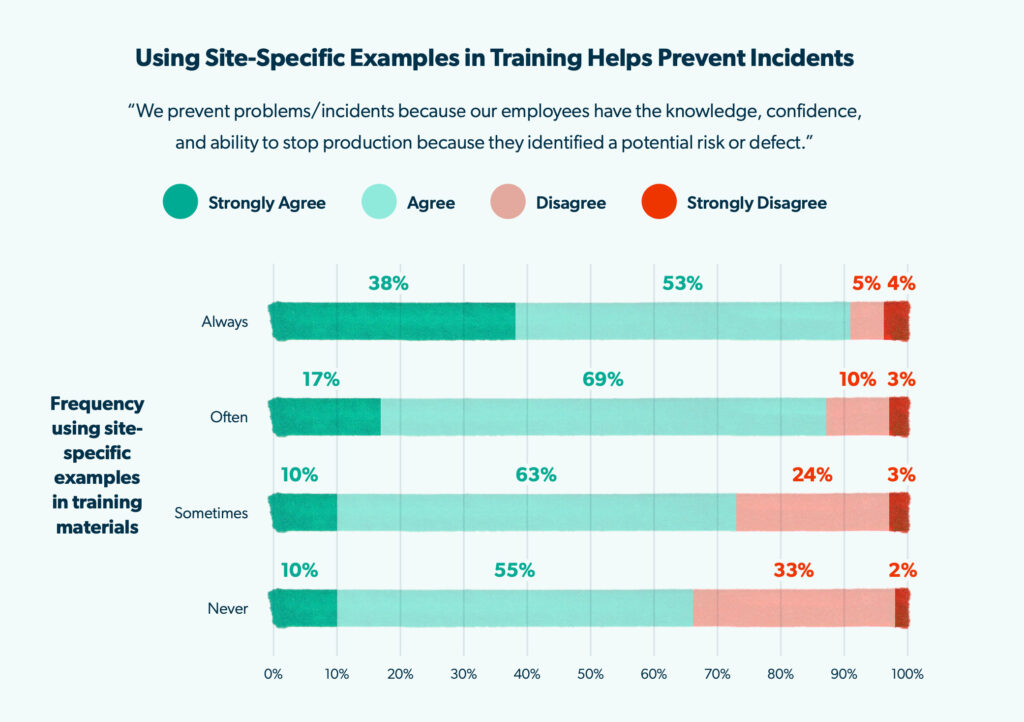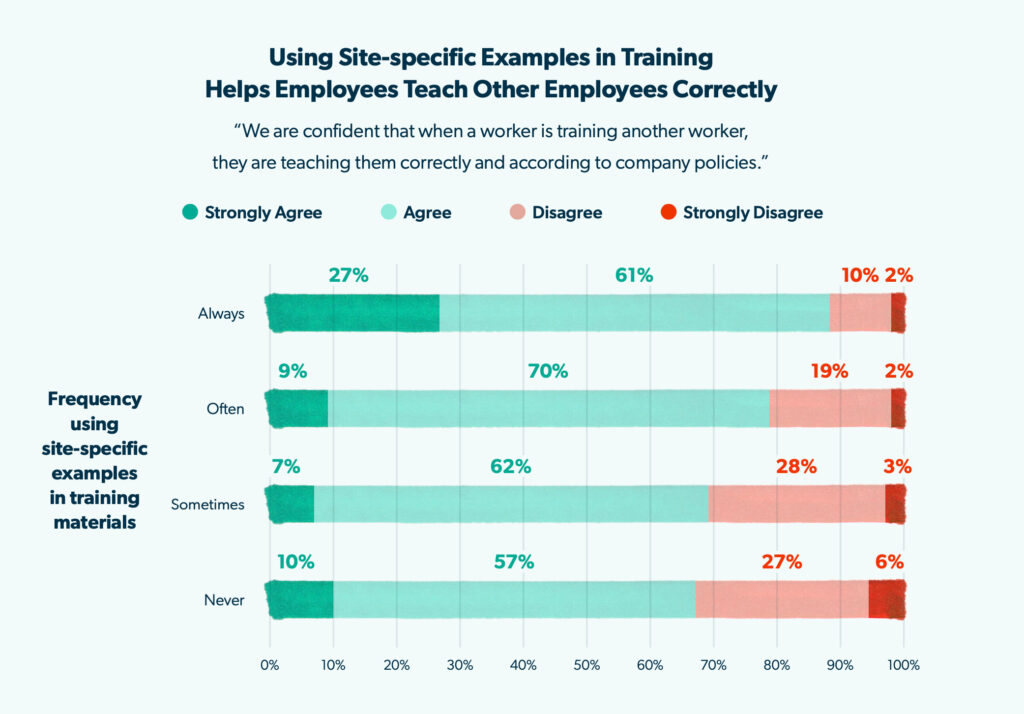Beyond Words: How Visuals Transform Training Programs

In the manufacturing industry where work environments are often fast-paced and information overload is a common challenge, training materials are no longer just about delivering accurate content. Granted, it’s essential to have correct instructions and information but a critical aspect often overlooked is the power of site-specific visuals. The right visuals aren’t just an enhancement; they’re a necessity for effective training.
Why Visuals Matter
Our brains process images 60,000 times faster than text. When you incorporate well-chosen visuals into your training materials, you’re not just decorating your content—you’re enhancing comprehension, retention, and engagement. Visuals help bridge the gap between abstract concepts and real-world application, making your training more effective.
Consider this: Have you ever tried assembling a piece of furniture using text-only instructions? It’s a tedious and often frustrating process. Compare that to having a step-by-step visual guide, even with stick figures and blocky shapes. This is already much easier. Now, imagine if the images were actual photos of the furniture you’re assembling, with the exact tools you’re currently using. The difference is night and day. The same principle applies to workplace training. Your team isn’t just reading instructions; they’re visualizing them in the workplace, which helps in retaining and applying what they’ve learned.
In a recent study, “Training Methods and their Impact on Workforce Performance in Manufacturing,” researchers found some training best practices that lead to greater comprehension, employee performance, and safety. Companies that make standard practice of inserting visual examples from their own facility into training scored 91% on the employee being able to recognize and prevent problems on the floor.
As you can see in the chart below, this is drastic improvement over the score of 65% for companies never using site-specifics in training courses. So, employees can improve safety when they are provided the right visuals and are faced with challenges on the floor.

Moreover, visuals can transcend language barriers, ensuring that all members of your team, regardless of their primary language, can understand the training. This is particularly important in diverse workplaces where employees may come from various cultural backgrounds.
Enhancing Engagement and Retention
Engagement is a key factor in successful training. When learners are engaged, they are more likely to pay attention and retain information. Visuals are what keeps the learners focused, making training materials more engaging. They can transform dry, text-heavy documents into dynamic and interactive learning experiences.
For example, including site-specific imagery in training courses is a good way to ensure initial comprehension. And the impact has a ripple effect. From that same study mentioned above, employees who learned with site-specific examples are more likely to teach other employees correctly down the road. Which is a critical measure of success, as the research also showed peer-to-peer provided instruction on the floor is provided in nearly every manufacturing facility.
Companies using site-specific examples in training content as standard practice tally in at 88% confident workers teach each other correctly. This is far more reassuring than the 67% for companies skipping the step of swapping out general imagery/content with site-specific examples. When workers are confident in their ability to teach their peers, it results in better employee engagement and a deeper, more meaningful connection to the importance of the work they’re doing.

The Importance of Customization
Not all visuals are created equal. To be truly effective, the images and graphics you use should be relevant to your specific site. Generic stock photos might not resonate with your workforce in the same way that site-specific visuals do. When your team sees familiar equipment, locations, or scenarios in their training, the material becomes more relatable and impactful.
Companies typically choose to leverage third-party courseware to meet the need for such a large amount of training material. The takeaway from this blog is for companies to ensure that the third-party courseware they choose can be easily edited and customized in house. For example, the Alchemy Training System comes with hundreds of industry-vetted courses as part of the platform, and they all can be edited within the platform so companies can easily incorporate site-specific images and customize their training program. Whether it’s photos and videos of your actual equipment or diagrams tailored to your processes, you can create training that’s both relevant and visually compelling.
In the end, great visuals are not a luxury—they’re a necessity. They are essential in making sure your team not only understands the training content but can also apply it effectively. By prioritizing the visual component of your training materials, you’re investing in the success of your team.





